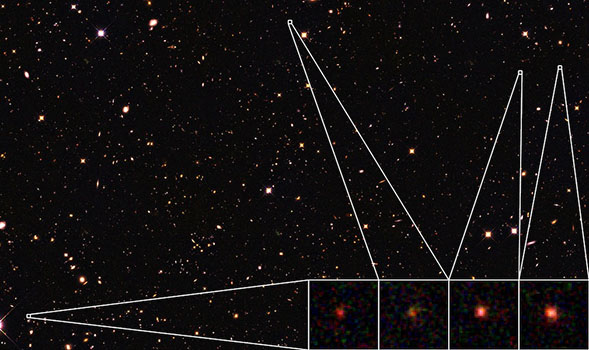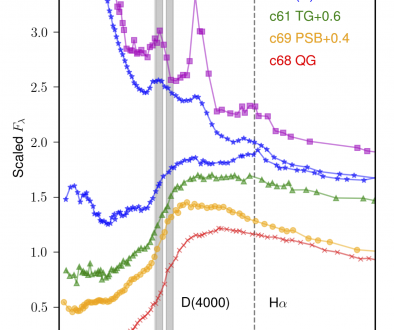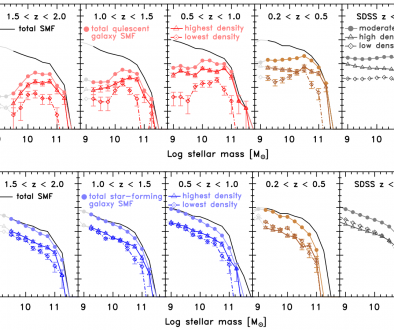Straatman 2014 Summary
We report the likely identification of a substantial population of massive (M ~ 1011M☉) galaxies at redshift z ~ 4 with suppressed star formation rates, from the FourStar Galaxy Evolution Survey (ZFOURGE). We found a total of 15 quiescent galaxies in 3 fields: COSMOS, CDFS and UDS, by selecting on optical to near-IR colours. Learn more about the survey here. Click here for the full paper.
Four of the galaxies in the galactic field UDS. Click to view a larger version. (red: HST/WFC3/F160W; blue: HST/WFC3/F125W; green: HST/WFC3/F814W).
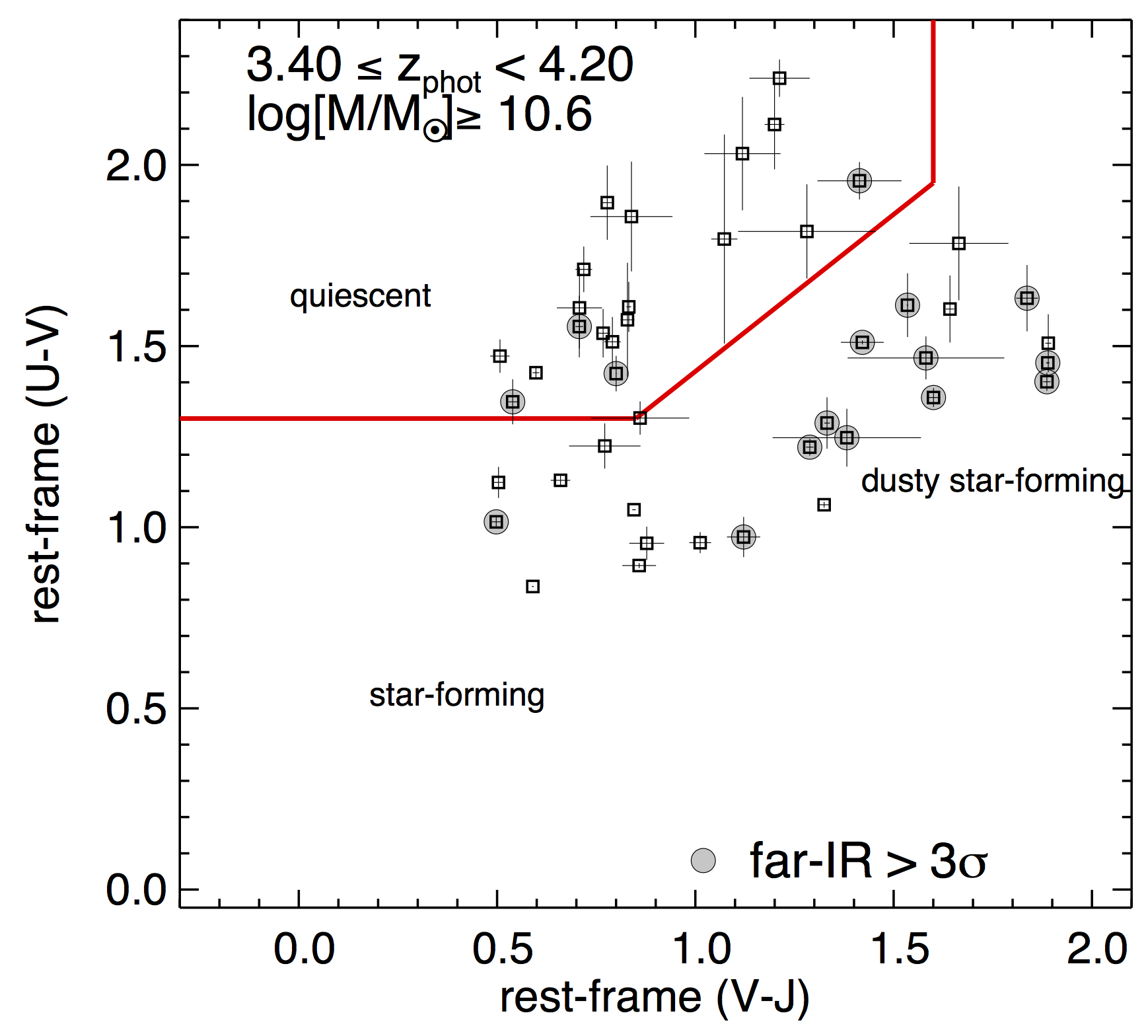
The galaxies were selected to have red rest-frame U-V colours and blue rest-frame V-J colours (top-left region of the figure). The V-J criterion helps to separate between red galaxies that are truly quiescent and those that have dust-obscured star-formation. Filled circles have 24 micron detections, a tracer of dust-obscured star-formation. A total of 15 galaxies are quiescent (excluding the 24 micron detections).

Representative examples of the spectral energy distributions of the quiescent galaxies. They show the pronounced breaks, sampled well by the the FourStar filters (shown in red), that are typical of aged stellar populations. The bottom right panel shows examples of the spectral energy distributions of younger galaxies or red galaxies with dust-obscured star-formation. The bottom-middle panel shows a stack of all quiescent galaxies in the sample.
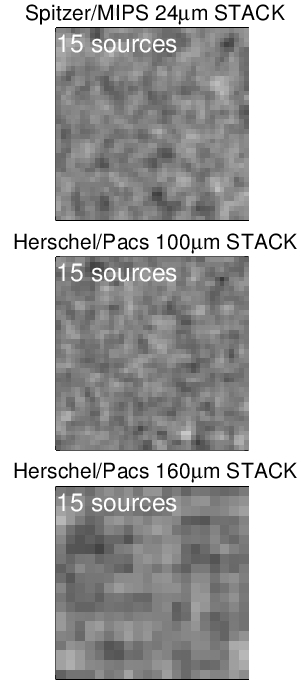
The spectral energy distributions of the galaxies indicate very small specific star-formation rates, consistent with being quiescent. We stacked ultra-deep Herschel/PACS far-infrared data at 24, 100 and 160 micron to look for traces of star-formation hidden by dust. The stacks reveal no detection.

The number density evolution of quiescent galaxies out to redshift z ~ 4 (leftmost panel). The middle panel shows the total mass density and the rightmost panel the fraction of quiescent galaxies in the universe. Albeit with large uncertainty, quiescent galaxies make up a large fraction even at z ~ 4 (roughly 35 %)!
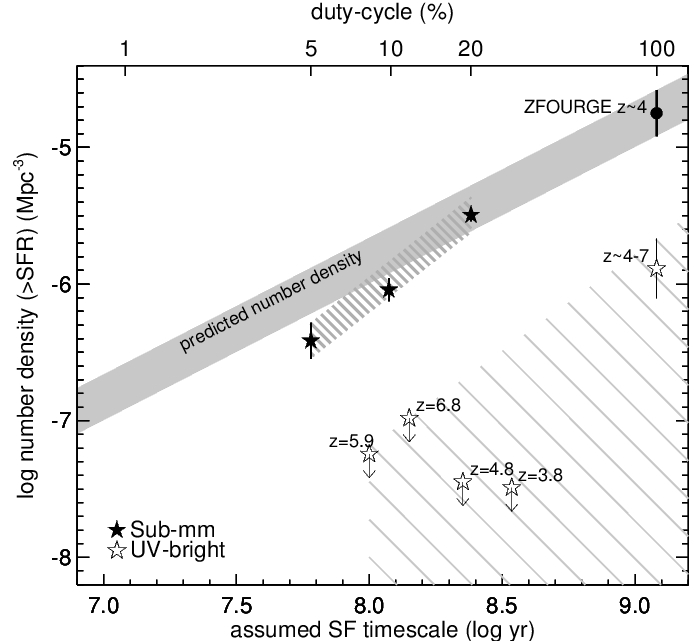 At z ~ 4 the universe is only 1.6 Gyrs old, suggesting that these massive quiescent galaxies must have formed quickly and with high star-formation rates. Here we compare the measured number density of sub milimeter and ultraviolet-bright galaxies at higher redshift. Only counts of sub milimeter galaxies with high star-formation rates are sufficient to match the number density of quiescent galaxies at z ~ 4.
At z ~ 4 the universe is only 1.6 Gyrs old, suggesting that these massive quiescent galaxies must have formed quickly and with high star-formation rates. Here we compare the measured number density of sub milimeter and ultraviolet-bright galaxies at higher redshift. Only counts of sub milimeter galaxies with high star-formation rates are sufficient to match the number density of quiescent galaxies at z ~ 4.
